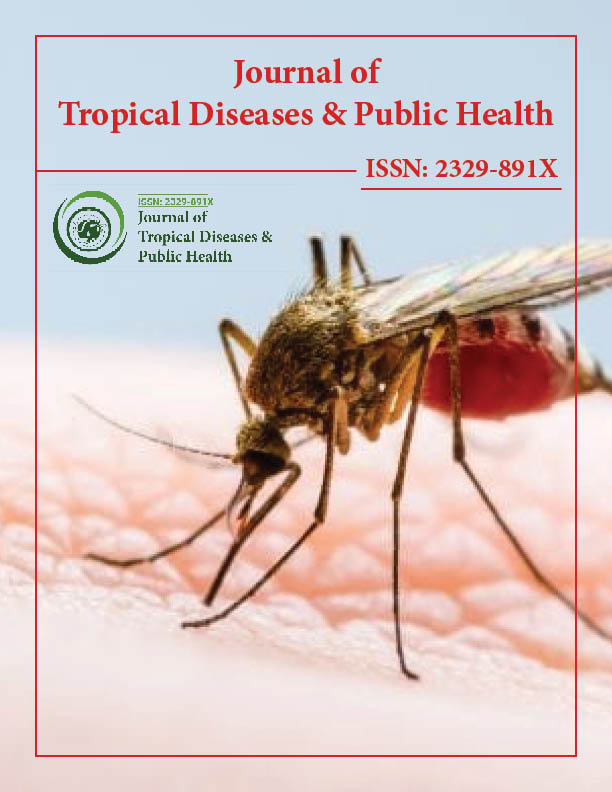Indexed In
- Open J Gate
- Academic Keys
- ResearchBible
- China National Knowledge Infrastructure (CNKI)
- Centre for Agriculture and Biosciences International (CABI)
- RefSeek
- Hamdard University
- EBSCO A-Z
- OCLC- WorldCat
- CABI full text
- Publons
- Geneva Foundation for Medical Education and Research
- Google Scholar
Useful Links
Share This Page
Journal Flyer

Open Access Journals
- Agri and Aquaculture
- Biochemistry
- Bioinformatics & Systems Biology
- Business & Management
- Chemistry
- Clinical Sciences
- Engineering
- Food & Nutrition
- General Science
- Genetics & Molecular Biology
- Immunology & Microbiology
- Medical Sciences
- Neuroscience & Psychology
- Nursing & Health Care
- Pharmaceutical Sciences
Perspective - (2025) Volume 14, Issue 2
Variations in Leptospirosis Transmission Following Seasonal Flooding in Low-Income Coastal Settlements
Mariana Lemos*Received: 26-May-2025, Manuscript No. JTD-25-29748 ; Editor assigned: 28-May-2025, Pre QC No. JTD-25-29748 (PQ); Reviewed: 11-Jun-2025, QC No. JTD-25-29748 ; Revised: 18-Jun-2025, Manuscript No. JTD-25-29748 (R); Published: 25-Jun-2025, DOI: 10.35241/2329-891X.25.13.471
Description
Leptospirosis remains a public health concern in several tropical countries, particularly in coastal cities where informal settlements are exposed to recurring floods. The disease, caused by pathogenic species of Leptospira, typically spreads through contact with water contaminated by urine from infected animals. Human exposure tends to increase substantially during the rainy season, especially in areas lacking adequate drainage, sewage systems, and waste management services. This environmental vulnerability, combined with high population density, contributes to repeated outbreaks in urban low-income neighborhoods.
The relationship between rainfall and disease incidence has been well documented. During periods of intense precipitation, floodwaters mix with sewage and animal waste, allowing the bacteria to survive for extended periods in waterlogged environments. In many coastal settlements, homes are built directly on floodplains without proper elevation or foundation, increasing the chances of residents wading through contaminated water. Children, sanitation workers, and street vendors often face the highest exposure due to regular contact with pooled water or soil that remains wet for days after flooding events.
One of the notable features of leptospirosis outbreaks is their clustering in specific neighborhoods. These clusters are often located in areas with poor infrastructure and high rodent populations. Rodents, particularly Rattus norvegicus, act as reservoirs for Leptospira and thrive in environments with open garbage, standing water, and abundant shelter. The lack of organized waste disposal and irregular collection services in many urban slums directly contributes to rodent proliferation. During floods, their burrows are disturbed, forcing them into human dwellings in search of dry ground and food, which further elevates transmission risks.
Surveillance data from Brazilian cities such as Salvador, Recife, and Rio de Janeiro consistently show spikes in confirmed cases within weeks of major storms. Despite the availability of post-exposure prophylaxis and public education campaigns, the disease burden remains significant. Part of the challenge is that symptoms often resemble those of other febrile illnesses like dengue or influenza, leading to delays in diagnosis and treatment. When not identified early, leptospirosis can cause severe complications, including kidney damage, liver failure, and pulmonary hemorrhage.
Another element involves managing urban rodent populations. This includes both reactive measures, like poisoning during outbreaks, and proactive strategies, such as removing food sources, sealing entry points in homes, and improving community cleanliness. Some municipalities have piloted integrated rodent management programs that combine chemical control with education and waste collection improvements. While results vary, reductions in rodent sightings and infection rates have been reported in several districts.
Health education is also critical. Public awareness campaigns that explain the routes of transmission and symptoms of leptospirosis can help communities take precautions and seek timely care. However, these efforts often fail to reach the most vulnerable populations due to language barriers, literacy challenges, or mistrust of authorities. Community health workers, drawn from within the neighborhoods they serve, have shown better outcomes in engaging residents, especially when outreach is conducted before the onset of the rainy season.
Conclusion
Leptospirosis transmission following flooding events in tropical coastal cities is a persistent challenge shaped by environmental conditions, urban poverty, and infrastructural gaps. While climate change projections indicate more frequent and intense rainfall events, efforts to control the disease must extend beyond emergency response to include sustained investments in housing, sanitation, and urban design. Until these structural issues are addressed, leptospirosis is likely to remain a seasonal health burden in the most vulnerable areas of tropical cities.
Citation: Lemos M (2025). Variations in Leptospirosis Transmission Following Seasonal Flooding in Low-Income Coastal Settlements. J Trop Dis. 13:471.
Copyright: © 2025 Lemos M. This is an open-access article distributed under the terms of the Creative Commons Attribution License, which permits unrestricted use, distribution and reproduction in any medium, provided the original author and source are credited.

